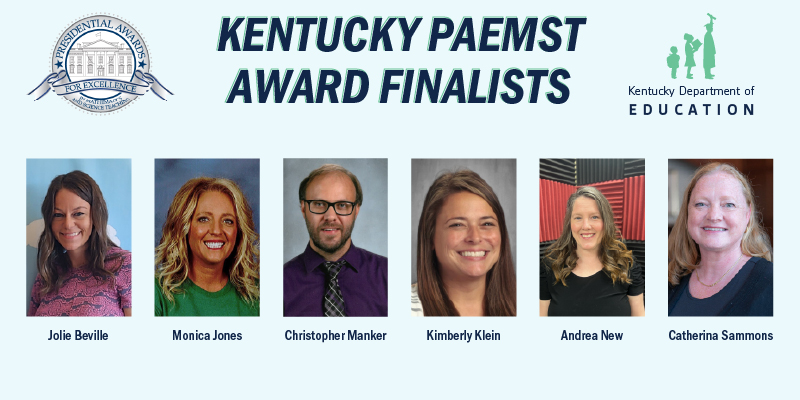Facilitating learning experiences aligned to the vision of our Kentucky Academic Standards for Science requires many shifts in instruction as well as changing the way teachers develop lessons. It takes a lot of time to find just the right learning experiences that will intrigue my students and pique their curiosity. Trying to find that real, authentic connection for 9- and 10-year-olds has been an ongoing challenge for me.
For a few years, I relied primarily on Engineering is Elementary kits (EiE) to provide activities that support the shift from teacher-led activities to student-focused experiences. I found the EiE kits to be one way to ensure that students were “doing” science, but I felt something was still missing. Though students love the EiE challenges and the content was aligned with the disciplinary core ideas in the Next Generation Science Standards (NGSS), I wanted to be more intentional about addressing problems and challenges that my students identified rather than those prescribed in the kits.
So like most teachers, I borrowed bits and pieces from the kits that I felt were useful and searched for ways to be more intentional about including opportunities for students to use the crosscutting concepts and science and engineering practices found in NGSS. As a result of my searching, and with the assistance of two resourceful instructional coaches, the Design Thinking Process approach surfaced.
Design Thinking is a way for students to identify a problem in their lives and work collaboratively to solve it. The Design Thinking approach stems from processes and methods used by professional designers. According to Design Thinking for Educators, here’s what that process looks like:
- DISCOVERY: I have a challenge. How do I approach it? Creating meaningful solutions for people begins with a deep understanding of their needs.
- INTERPRETATION: I learned something. How do I interpret it? It involves storytelling, sorting and condensing thoughts, until a compelling point of view and clear direction for ideation emerge.
- IDEATION: I see an opportunity. What do I create? With careful preparation and a set of rules to follow, a brainstorm session can yield hundreds of fresh ideas.
- EXPERIMENTATION: Building prototypes means making ideas tangible, learning while building them and sharing those prototypes with other people.
- EVOLUTION: This involves planning next steps, communicating your idea to people who can help realize it and documenting the process.
I have found that incorporating design thinking is a great way to innovate my science teaching. I recently framed a unit on energy so that students would engage in the design thinking approach to solving a problem. It all began with students being asked to identify a problem in their lives that could be solved with the use of an electrical circuit.
Each student group got to work, busily identifying many problems in their daily lives: messy bedrooms, forgetting to feed the family pet and even how to keep coyotes out of a chicken coop! One group identified the problem of a noisy classroom. As they worked through the steps of the design thinking process, students experimented with several different solutions to their selected problem
Throughout the unit, students engaged in mini lessons that introduced the basics of open and closed circuits, insulators and conductors, and schematic design. Using this content knowledge, students were able to determine how to connect the parts of a circuit in order to have the desired outcome, whether it was a buzzer to remind them to feed a pet or a blinking light to serve as a reminder to be quieter in the classroom.
Collaboration was a key factor in the success of this unit and as a result, the level of student engagement was amazing throughout the energy unit. Student groups created prototype and peer groups, provided constructive feedback and assisted with troubleshooting. All students were genuinely engaging in design thinking process and learned a great deal about energy in doing so.
Student discourse was focused throughout the unit and I was able to gather evidence of the learning that occurred on a daily basis! Students were overheard posing questions to each other that prompted further thinking or encouraged clarification of understanding. The posed questions were a powerful tool that led to revisions in the circuitry, which then resulted in successful design solutions. Students supported each other by providing content knowledge expertise, fostered deeper understanding and helped other groups identify the flaws in their designs.
The 4th-grade teacher team at Simpsonville Elementary School (Shelby County), my principal and district staff are very supportive as we continue to explore NGSS. They understand that science is not just about learning the content, but instead “learning to do.”
Some of the brightest career opportunities in the future are expected to be in engineering. To know that I was able to foster curiosity and engineering practices in my 4th-grade classroom is one of my greatest accomplishments.
Katie Strange is in her 13th year as a 4th-grade teacher at Simpsonville Elementary (Shelby County). Strange graduated from the University of Louisville with her master of arts in K-5 education.




Leave A Comment